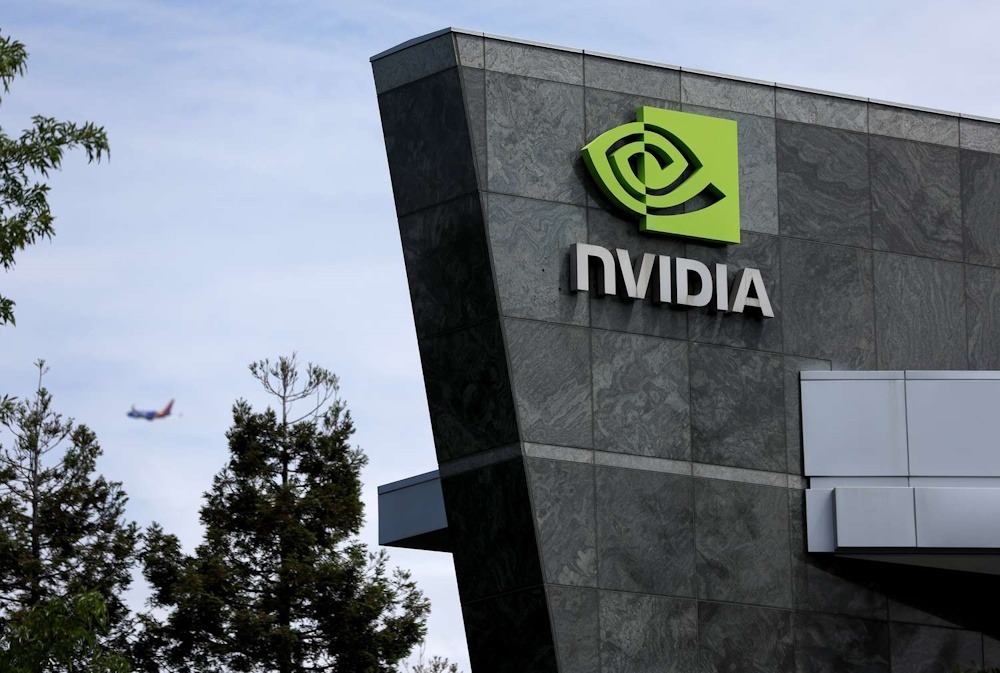Is Nvidia not included in your portfolio?

In this year’s bull market, there are companies that specialize in artificial intelligence, such as Nvidia, and then there are the rest of the companies. As the second half of the year commences, investors are pondering if a shift is imminent.
The chip maker’s products, which are considered crucial for powering AI technology, continued to generate increasing enthusiasm throughout the second quarter. Nvidia’s sales and profits in May exceeded Wall Street expectations for the fifth consecutive quarter. The stock experienced a significant increase of 37% in the second quarter and has shown an impressive growth of 149% for the year.
A significant portion of the remaining index has shown little to no progress. On a year-to-date basis, the average stock in the S&P 500 has seen a 4.1% increase, while the overall index has experienced a more significant 14.5% gain. According to Dow Jones Market Data, this is the largest underperformance since at least 1990. During the second quarter, there was a decline in six out of the 11 sectors in the index, which included financials, energy, and industrials.
Some value investors are becoming frustrated with the divergence.
“We are unable to keep up with the competition due to our lack of ownership in Nvidia,” remarked Max Wasserman, co-founder and senior portfolio manager at Miramar Capital. Not owning that particular stock can have a significant negative impact. Every day is an excruciating experience.
Investors are preparing themselves for potential fluctuations in the second half of the year. There is an ongoing expectation that the Federal Reserve will make a move to reduce interest rates by the end of 2024. However, if this anticipation turns out to be premature, it could potentially lead to a decline in stock prices. The outcome of the presidential election introduces a level of uncertainty in important areas such as taxes and energy, as it impacts government policy. President Biden’s lackluster performance in the recent debate may add to the confusion. Wall Street analysts are anticipating robust corporate earnings growth, but there is a possibility that it may not come to fruition.
Nvidia experienced significant growth within the S&P 500 last year, with its value more than tripling over the past 12 months. In June, its market value reached $3 trillion, just under four months after it had reached the $2 trillion milestone.
A significant portion of the index’s total return this year, up until Wednesday, can be attributed to the Magnificent Seven – Nvidia, Microsoft, Apple, Amazon.com, Meta Platforms, Alphabet, and Tesla. According to S&P Dow Jones Indices, these big technology stocks account for 60% of the return.
Investors have been drawn to big tech stocks due to their rapid earnings growth, which outpaces the rest of the market.
“We are heavily invested in AI plays because they offer significant long-term growth potential,” stated Julie Biel, chief market strategist at Kayne Anderson Rudnick. “Even if you excel in the other parts of your portfolio, lacking sufficient weight in the same area will lead to unfavorable outcomes.”
According to FactSet, analysts on Wall Street are projecting a 16% increase in earnings for companies in the information-technology sector of the S&P 500 in the second quarter compared to the previous year. Similarly, they forecast a 19% growth in earnings for the communication-services group, which includes companies like Alphabet and Meta. Experts predict a modest overall growth of less than 9% for the S&P 500.
According to Biel, the subdued performance of most stocks can be attributed to the uncertain economic outlook.
The Dow Jones Industrial Average has seen a 3.8% increase so far this year. The Dow Jones Transportation Average, which monitors the performance of 20 major U.S. companies in sectors such as trucking and railroads, has experienced a decline of 3%. The Russell 2000 index of small and midsize companies has experienced minimal fluctuations.
Inflation has proven to be more persistent than anticipated by many investors at the start of the year. Despite initial expectations of multiple rate cuts, the Federal Reserve has maintained steady interest rates throughout the year, surprising many in the financial industry.
However, there has been a recent slowdown in price increases, which has sparked optimism on Wall Street that the long-awaited rate cuts may finally come to fruition. According to the Commerce Department, the Fed’s preferred inflation gauge remained unchanged in May compared to the previous month.
Despite Nvidia’s recent surge, many investors believe that there is no bubble forming in the market, unlike the dot-com era.
According to James Hagerty, the CEO of Bartlett Wealth Management, investors have shown some differentiation. Certain stocks experienced significant declines despite strong earnings that fell slightly short of expectations.
On Friday, Nike shares experienced a significant drop of 20% following the company’s decision to revise its revenue forecast. Micron, the chip maker, experienced a 7.2% decline on Thursday due to underwhelming sales guidance that left investors disappointed.
According to FactSet, the stocks in the Magnificent Seven have an average price-to-earnings ratio of 37 for the next 12 months. The S&P 500 is currently valued at a price-to-earnings ratio of 21.
Investors believe that Nvidia’s rally can continue as long as its sales and profits continue to exceed expectations. However, the chip maker’s high valuations have significantly limited their margin for error.
“In my opinion, when Nvidia experiences a decline, it will likely happen rapidly,” stated Brian James, who serves as the managing partner and director of investments at Ullman Wealth Partners.
Ramesh Sridharan
Ramesh Sridharan is our Stock Market Correspondent covering events and daily movements of stock markets in Asia. He is based in Mumbai








